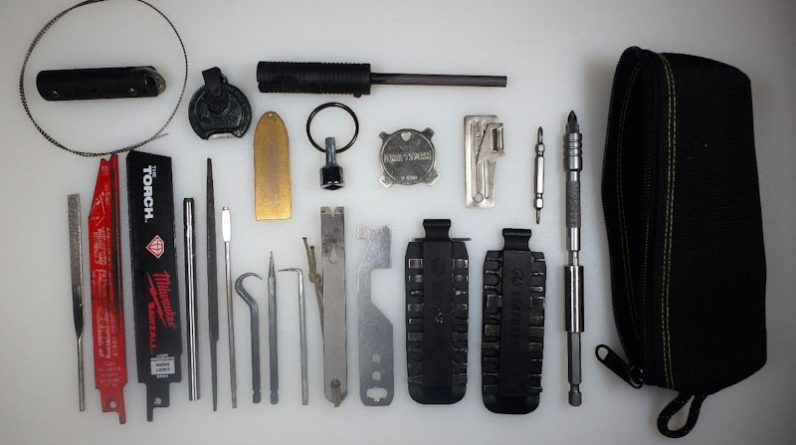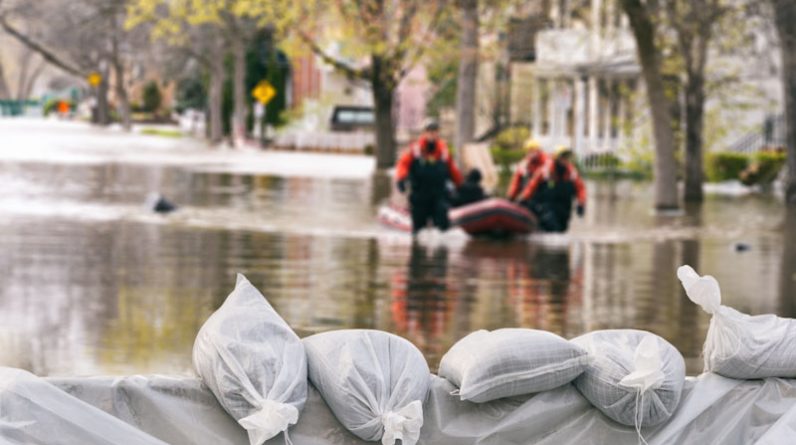The majority of us preppers tend to be rather self-reliant individuals equipped with various skills and training to navigate the wilderness with confidence. However, there are occasions when we encounter circumstances that necessitate seeking assistance.
Be it a fractured limb, a medical crisis within our group, or simply getting disoriented and losing our way back home, these moments call for a means to establish communication with the outside world.
In such situations, it becomes imperative to signal our location and relay our predicament effectively. The emergency signaling methods can be broadly categorized into three distinct types: audible, visual, and electronic, with the first two being the most common options for most folks..
Emergency signaling methods
Audible signals
Audible signals are particularly effective for communicating over short to medium distances, and they play a crucial role in wilderness signaling.
One of the most widely recognized auditory distress signals is the use of three distinct blasts, which indicates the need for assistance. In response, rescuers commonly employ four blasts to acknowledge that they’ve heard the distress call.
Additionally, the Morse code for S-O-S, which consists of three short blasts, three long blasts, and three more short blasts, serves as another universally understood signal for requesting help.
There are various tools you can use to signal your presence, and each one has its advantages, depending on the predicament you find yourself in.
Shouting and Yelling: While simple, shouting and yelling are still effective means of generating audible signals. In certain situations, especially if you’re in a group, shouting loudly and consistently can help rescuers pinpoint your location. It’s also worth mentioning that even though this signaling method is available to everyone, it’s far from perfect, and you will consume a lot of energy trying to call for help.
Whistles: Whistles are invaluable for saving your voice and generating a much louder sound with minimal effort. Their higher pitch allows the sound to travel farther than a human voice. Whistles are also exceptionally lightweight, making them an essential component of your standard emergency or survival gear. For instance, I carry a metal whistle on me as part of my everyday carry (EDC) kit.
Gunshots: In situations where other signaling methods are unavailable, a series of gunshots can be employed to alert others to your predicament. However, it’s important to exercise caution when using this method, as you should avoid shooting into the air due to the potential risks associated with stray bullets. Remember that what goes up must come down. Preserving ammunition is also a crucial consideration.
Fire Crackers or Pyrotechnics: In areas where it’s safe to use them, firecrackers or pyrotechnic flares can create loud and visually striking signals. However, exercise extreme caution when handling pyrotechnics, especially in fire-prone environments. Besides providing a loud signaling sound, they can also be used to scare dangerous animals if you aren’t carrying other means to protect yourself.
Air Horns: While significantly louder than whistles, air horns have the limitation of relying on compressed air to produce sound. They are bulkier and heavier compared to whistles but are a viable choice for short-range signaling, especially when traveling by vehicle. Air horns can help guide rescuers to your location when they are in close proximity.
Car Horns: Car horns, similar to air horns, can generate a loud audible signal when you are lost or trapped in your vehicle. However, they are dependent on the vehicle’s battery for power and are not suitable for extended use. Car horns are effective for drawing attention to your situation but have limitations based on the vehicle’s power supply.
Musical Instruments: If you happen to have a musical instrument with you, playing it in a repetitive or recognizable pattern can serve as a unique audible signal. For example, blowing a harmonica or playing a distinct melody on a flute can draw attention.
Visual signals
In contrast to audible emergency signals, visual signals exhibit distinct characteristics during daylight and nighttime conditions, and it’s crucial to understand when to use each type based on the prevailing light conditions in your emergency situation.
Familiarizing yourself with both daytime and nighttime signaling methods allows you to choose the most appropriate one for your circumstances.
Daylight Signals:
Signal Mirror: A widely recognized survival signaling tool among preppers, the signal mirror is designed to reflect a bright light, effectively alerting aircraft and search parties to your location during sunny conditions. To use it optimally, position yourself between the aircraft and the sun, reflecting the light onto your thumb, and aim it at the aircraft to gain the pilot’s attention. However, it may not be as effective on cloudy or overcast days, so it’s wise not to rely solely on it during such conditions.
Ground signals visible from the air: These are highly efficient during daylight hours, as they can work even when you are not present at the signal location. Combining ground signals with movements, such as producing smoke or waving a flag or a contrasting branch, enhances their effectiveness. Standard symbols can be easily created using natural materials like brush, leafy branches, dirt, stones, sand, or snow. A simple “SOS” message that is two times your body height can be effectively used to signal distress.
Signal Fires: A fire is a versatile visual signal that can be effective both day and night. During the day, creating a smoky fire by adding wet wood or live foliage to an existing fire is advisable. At night, a large and bright fire is essential. Signal fires should be prepared in advance so that you can ignite them quickly when needed. They should be constructed with ample kindling to catch fire and burn brightly without delay.
Nighttime Signals:
Signal Fires: As mentioned earlier, signal fires can also serve as effective nighttime signals. At night, you’ll want to maintain a large and bright fire. Preparing these fires ahead of time is crucial since you may not have the luxury of building them from scratch in an emergency. Also, you may need a lot of fuel for a signaling fire, so it’s imperative to be able to gather plenty of wood.
Flares: Signal flares are versatile and can be used effectively both day and night. They are useful on the ground and in the air, depending on the type.
Ground flares, similar to those kept in vehicles for breakdown emergencies, can illuminate your location on the ground and remain visible for several minutes, aiding both aircraft and ground searchers.
Aerial flares can be shot into the air to attract attention, and parachute-equipped varieties hang in the air longer, increasing visibility, although they may drift if caught by the wind.
Understanding the characteristics of visual signals in various lighting conditions helps you make informed choices in emergency situations, increasing the likelihood of a successful rescue.
Electronic signals
While we often take our cell phones for granted due to their proximity-dependent nature, electronic devices offer valuable and potent means of signaling, especially in remote or emergency situations.
Cell Phones and Smartphones: Your cell phone or smartphone can remain a viable means of communication in the backcountry, particularly when you are situated on a ridge or hilltop with a clear line of sight to a cell tower.
Different service providers offer varying levels of reception in rural areas, so it’s advisable to consult coverage maps when selecting your provider. Text messages are particularly useful in low-signal areas since they require less signal strength compared to voice calls. It’s a good practice to test your phone’s capabilities when entering a new area to ensure you can reach out when needed.
Satellite Phones: The latest generations of satellite phones come equipped with internal GPS, allowing them to transmit both voice messages and your GPS location. These phones communicate via satellites rather than relying on cell phone towers, making them suitable for remote locations where line-of-sight to a tower may be challenging.
While satellites also require line of sight, they have the advantage of receiving signals vertically, making connections more feasible. However, they have two limitations: a clear view of the satellite is necessary, and conversations are often limited to a few minutes due to satellite movement. If a connection is lost, it can be reestablished when the next satellite passes overhead.
(Win a Prize!) Enter Our 2023 Survival Story Contest 🏆😍
I own a satellite phone, and I can tell you that such a device wasn’t cheap. The price range for satellite phones can vary significantly depending on the brand, model, and features offered. Here’s a general price range for satellite phones:
Basic Satellite Phones: Basic satellite phones that provide voice and text communication typically range from $500 to $1,500 USD. These phones are more affordable but may have limited features.
Advanced Satellite Phones: More advanced satellite phones with additional features such as internet connectivity, email, and GPS capabilities can range from $1,500 to $2,500 USD or more. These phones are suitable for users who require a broader range of communication options.
Satellite Data Devices: Satellite data devices, which allow for data transmission and often work in conjunction with smartphones or other devices, can range from $500 to $2,000 USD or more. The price depends on data speed, features, and usage plans.
It’s important to note that the cost of satellite phones is not limited to the device itself. Users also need to consider service plans, which may involve monthly or prepaid fees for airtime and data usage. Service plan costs can vary depending on factors such as coverage area and usage volume.
Personal Locator Beacon (PLB): A personal locator beacon, or PLB, is an indispensable electronic device for backcountry travelers and those at sea. Like satellite phones, PLBs rely on satellite communication and share the requirement of a clear sky view.
However, PLBs serve a distinct purpose: they transmit your location to search and rescue satellites, along with a distress signal, and continue transmitting until their battery is depleted, typically lasting 24 to 48 hours.
This continuous transmission ensures that your rescuers can locate you efficiently. PLBs are cost-effective, priced at a few hundred dollars each, in contrast to satellite phones, which, as mentioned above, can cost thousands. They do not necessitate a service contract for usage, making them an accessible and practical choice for emergency situations.
It’s also worth mentioning that the prices of PLBs vary greatly. Here’s a general price range for PLBs:
Basic PLBs: Basic PLBs without many additional features usually fall within the range of $200 to $300 USD. These PLBs serve the primary function of transmitting your distress signal and location to search and rescue authorities.
Advanced PLBs: Some PLBs come with additional features such as built-in GPS, longer battery life, or the ability to send messages. These advanced PLBs typically cost between $300 to $500 USD or more, depending on the features.
Additional recommendations regarding signaling devices
Testing your signaling devices and skills is a crucial part of being prepared for emergencies or outdoor adventures. Regular testing helps ensure that your equipment is functioning correctly and that you are proficient in using them. Here’s how to go about testing your signaling devices and skills:
Regular Equipment Checks:
Inspect your signaling devices for physical damage, corrosion, or any other issues that may affect their functionality. Ensure that batteries or power sources are charged and replace them if needed. Check for expired flares, signal cartridges, or other consumable signaling items and replace them as required.
Test the operation of your devices according to the manufacturer’s instructions. For example, for a whistle, blow it to ensure it produces a loud sound. For a signal mirror, practice aiming it to reflect sunlight.
Signal Device Familiarization:
Familiarize yourself with the proper operation of each signaling device. Read the user manuals and understand their functions. Practice using your devices in a controlled setting. For example, you can try blowing a whistle or lighting a signal flare in your backyard.
Signaling Drills:
Conduct signaling drills in safe environments to simulate emergency situations. For instance, you can simulate getting lost in a forest and then practice using your devices to signal for help. Involve family members or outdoor companions in these drills to ensure that they also know how to use the signaling devices.
Communication Tests:
If you have a satellite phone, cell phone, or two-way radio, make test calls or send test messages to ensure they are working correctly. Confirm that you can communicate with the necessary contacts, such as emergency services, using your devices.
Night and Day Testing:
If you have visual signaling devices, test them during both daytime and nighttime conditions to understand their effectiveness under different lighting scenarios.
Navigation and Location Skills:
Test your navigation skills, such as using a map and compass or GPS device, to determine your exact location. This is important for providing accurate information to rescuers. Practice using GPS coordinates or other location-sharing features on your devices.
Practice Signaling Codes:
Learn and practice standard distress signals, such as SOS in Morse code or internationally recognized visual distress signals. Ensure you know how to signal for help using these codes.
Check Legal Requirements:
For some signaling devices, there may be legal requirements or regulations that dictate how often they should be tested or inspected. Ensure you comply with these requirements. A crucial caution to bear in mind: If you possess a Personal Locator Beacon (PLB), refrain from practicing with it unless it features a designated test mode. Activating a PLB without a valid emergency can result in the dispatch of a search and rescue team, potentially incurring substantial costs, often amounting to thousands of dollars.
Emergency Contact Information:
Keep a list of emergency contact numbers and frequencies with your signaling devices, and test these contacts to ensure they are reachable.
Concluding
So, whether you’re preparing for outdoor adventures or emergency situations, it is essential to be well-versed in various signaling methods and have well-maintained equipment.
Regularly testing your signaling devices and skills ensures you can effectively communicate for help when needed. Additionally, it’s crucial to exercise caution when practicing with signaling devices to avoid unnecessary deployment of search and rescue resources, which can result in substantial financial consequences. Stay prepared and stay safe!









